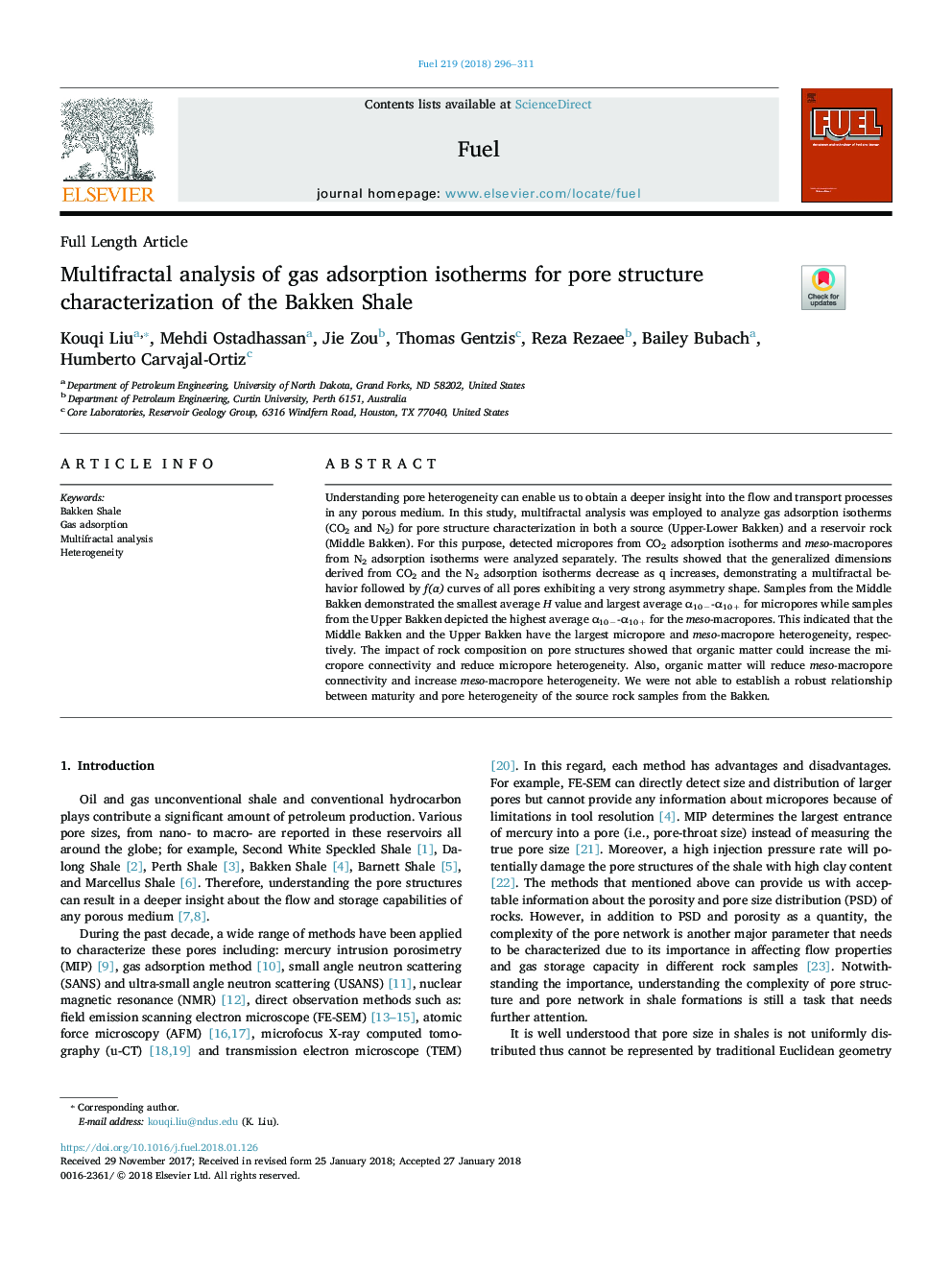| Article ID | Journal | Published Year | Pages | File Type |
|---|---|---|---|---|
| 6631844 | Fuel | 2018 | 16 Pages |
Abstract
Understanding pore heterogeneity can enable us to obtain a deeper insight into the flow and transport processes in any porous medium. In this study, multifractal analysis was employed to analyze gas adsorption isotherms (CO2 and N2) for pore structure characterization in both a source (Upper-Lower Bakken) and a reservoir rock (Middle Bakken). For this purpose, detected micropores from CO2 adsorption isotherms and meso-macropores from N2 adsorption isotherms were analyzed separately. The results showed that the generalized dimensions derived from CO2 and the N2 adsorption isotherms decrease as q increases, demonstrating a multifractal behavior followed by f(α) curves of all pores exhibiting a very strong asymmetry shape. Samples from the Middle Bakken demonstrated the smallest average H value and largest average α10â-α10+ for micropores while samples from the Upper Bakken depicted the highest average α10â-α10+ for the meso-macropores. This indicated that the Middle Bakken and the Upper Bakken have the largest micropore and meso-macropore heterogeneity, respectively. The impact of rock composition on pore structures showed that organic matter could increase the micropore connectivity and reduce micropore heterogeneity. Also, organic matter will reduce meso-macropore connectivity and increase meso-macropore heterogeneity. We were not able to establish a robust relationship between maturity and pore heterogeneity of the source rock samples from the Bakken.
Related Topics
Physical Sciences and Engineering
Chemical Engineering
Chemical Engineering (General)
Authors
Kouqi Liu, Mehdi Ostadhassan, Jie Zou, Thomas Gentzis, Reza Rezaee, Bailey Bubach, Humberto Carvajal-Ortiz,
